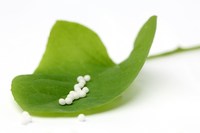Agro Homeopathy
Traditional and Modern Agriculture: A Comparison of Approaches
Before the rise of modern agricultural techniques, farmers relied on simple, natural methods to keep the soil fertile and protect their crops. Mature manure was used to enrich the land, while herbs were processed into natural sprays to combat diseases and pests. With the Industrial Revolution, however, mono-culture became widespread, leading to the use of chemical pesticides. These chemicals delivered short-term benefits but also created long-term challenges, such as the development of resistance among pests.
Today, the agricultural sector relies heavily on chemical inputs, making it increasingly difficult for plants to build natural resistance against diseases. While pesticides may temporarily reduce pest populations, they do so superficially. Often, when one local pest is suppressed, other, more aggressive species quickly take its place. As a result, ever-stronger chemicals are required to achieve the same effect. Yet agricultural chemicals can never address the root causes of plant disease or pest problems. They act only symptomatically, without improving the plant’s overall health, and leave harmful residues in the environment.
In contrast, homeopathy focuses on strengthening the plant itself. Homeopathic remedies enhance the vitality and resilience of crops, making them naturally less susceptible to disease and pests. This approach uses much smaller but more strong doses than conventional chemicals, and it leaves no harmful residues in the soil or surrounding ecosystem. Remarkably, agro-homeopathy can even be applied successfully in mono-culture farming. If you are open to a more sustainable approach to agriculture and plant health—one that respects nature and works in harmony with its processes—consider exploring agro-homeopathy.
Feel free to reach out to me, and I will gladly share more about this holistic method of plant health and disease management.
